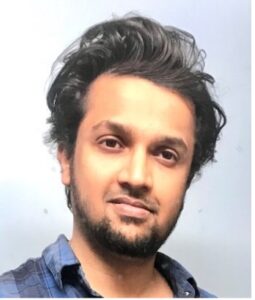 Li-Yu Yu’s research focuses on optical microscopy and spectroscopy for functional imaging in a multicellular environment, with imperative applications in medical diagnosis, pharmaceutical research, and therapeutic monitoring. To extend the imaging depth in tissues for minimally invasive diagnosis, he has developed an optimization framework for recovering light distortion in scattering media. He leveraged the seemingly adverse random property of scattering media to mitigate the dimension limitation in wavefront shaping problems, making single-shot high-fidelity light manipulation possible at a sub-millisecond frame rate. This breakthrough has the potential to enable high-speed endomicroscopy and holographic optogenetics for a real-time acquisition speed and subcellular resolution. Recently, Li-Yu has worked on a novel high-content spectroscopic measurement strategy that leverages excitation encoding and model-based AI to achieve broadband, real-time, super-resolved spatio-spectral image reconstruction, offering a platform for advanced functional analysis in a sophisticated multicellular environment. Li-Yu is a Ph.D. student in the Department of Electrical Engineering and Computer Science, working in the Computational Biophotonics Lab under the supervision of Professor Sixian You.
Li-Yu Yu’s research focuses on optical microscopy and spectroscopy for functional imaging in a multicellular environment, with imperative applications in medical diagnosis, pharmaceutical research, and therapeutic monitoring. To extend the imaging depth in tissues for minimally invasive diagnosis, he has developed an optimization framework for recovering light distortion in scattering media. He leveraged the seemingly adverse random property of scattering media to mitigate the dimension limitation in wavefront shaping problems, making single-shot high-fidelity light manipulation possible at a sub-millisecond frame rate. This breakthrough has the potential to enable high-speed endomicroscopy and holographic optogenetics for a real-time acquisition speed and subcellular resolution. Recently, Li-Yu has worked on a novel high-content spectroscopic measurement strategy that leverages excitation encoding and model-based AI to achieve broadband, real-time, super-resolved spatio-spectral image reconstruction, offering a platform for advanced functional analysis in a sophisticated multicellular environment. Li-Yu is a Ph.D. student in the Department of Electrical Engineering and Computer Science, working in the Computational Biophotonics Lab under the supervision of Professor Sixian You.
 Atharva Sahasrabudhe is a MIT graduate student in the Department of Chemistry and advised by Prof. Polina Anikeeva at the Research Laboratory of Electronics and McGovern Institute for Brain Research. Atharva’s graduate research has focused on development of a collection of advanced multifunctional biomedical devices in novel form factors and unique capabilities, that enable modulation of brain and intestinal neurophysiology. In collaboration with colleagues at Duke and MIT, Atharva has developed wireless microelectronic fibers that combine the scalability and mechanical versatility of thermally drawn polymer fibers with the sophistication of microelectronic chips for organs as diverse as the brain and the gut. Some of his other optical and electrochemical fiber devices have also been instrumental in the discovery of specialized gut enteroendocrine cells that discern sugar from artificial sweetener and for studying gaseous neurotransmitters through their controlled generation and delivery in brains of behaving rodents. Atharva’s tools will provide key insights into the roles of specific cells in bidirectional communication between the peripheral organs and the brain; thereby empowering the studies of clinically relevant autonomic neuromodulation and the enigmatic interoceptive networks in health and disease.
Atharva Sahasrabudhe is a MIT graduate student in the Department of Chemistry and advised by Prof. Polina Anikeeva at the Research Laboratory of Electronics and McGovern Institute for Brain Research. Atharva’s graduate research has focused on development of a collection of advanced multifunctional biomedical devices in novel form factors and unique capabilities, that enable modulation of brain and intestinal neurophysiology. In collaboration with colleagues at Duke and MIT, Atharva has developed wireless microelectronic fibers that combine the scalability and mechanical versatility of thermally drawn polymer fibers with the sophistication of microelectronic chips for organs as diverse as the brain and the gut. Some of his other optical and electrochemical fiber devices have also been instrumental in the discovery of specialized gut enteroendocrine cells that discern sugar from artificial sweetener and for studying gaseous neurotransmitters through their controlled generation and delivery in brains of behaving rodents. Atharva’s tools will provide key insights into the roles of specific cells in bidirectional communication between the peripheral organs and the brain; thereby empowering the studies of clinically relevant autonomic neuromodulation and the enigmatic interoceptive networks in health and disease.